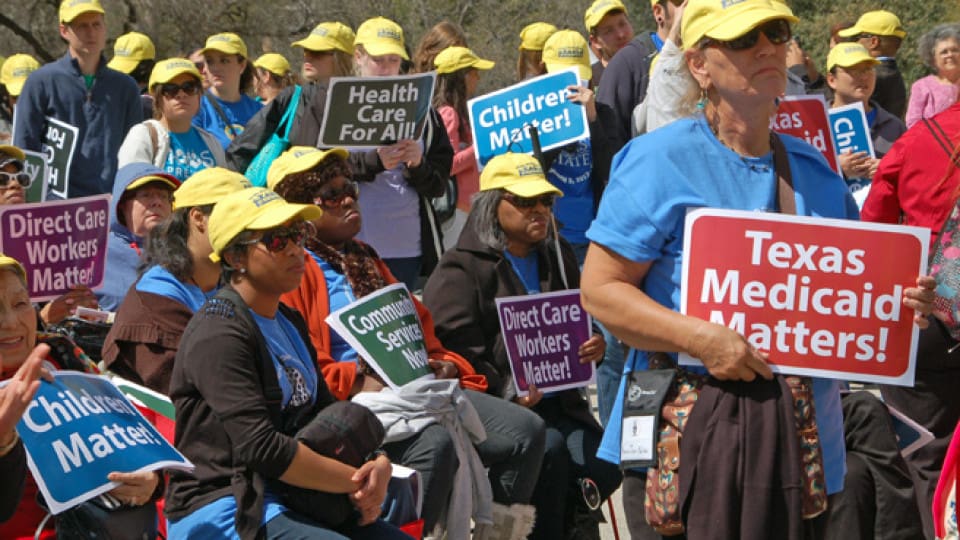This week CPPP joins dozens of other Texans—individuals and organizations—to testify on the Texas Senate’s current state budget proposal, Senate Bill 1.
As our testimony details, we are alarmed by several key Senate budget proposals related to Medicaid:
- Not fully funding Medicaid in the final month(s) of the 2016-2017 budget, denying $1.2 billion in general revenue (state dollars) to this critical program
- Not funding the $1.2 billion general revenue gap in Medicaid base funding in the 2018-2019 budget
- Not including enrollment growth costs (over $700 million) in the budget, though instructions from the Governor and the Legislative Budget Board called for factoring in such growth
- A rider requiring an additional 1.5 percent in GR cuts across the budget, with only K-12 formula funding (Foundation School Program) exempt. If distributed evenly across the budget, this would require another $400 million GR (or more) in Medicaid funding reductions.
The Center is also alarmed that HHSC Commissioner Smith noted in his briefing material for the Committee, “(t)o the extent the Legislature wants to make adjustments to optional benefits and eligibility, this funding request may be reduced.” We recall all too well the disastrous 2003 Legislative cuts to Medicaid and CHIP,[i] nearly all of which were reversed. Lawmakers made cuts to eligibility for maternity coverage, the Children’s Health Insurance Program (CHIP), and they eliminated eyeglasses, hearing aids, mental health services, and podiatry for all adults including seniors and adults with disabilities. Kids covered by CHIP dropped by over 200,000 (a 40 percent drop), and seniors and adults with disabilities faced worsening outcomes as their mental health, vision, and hearing needs went without treatment.
Is Under-funding a Cut? Texas has often in the last 20 years used low enrollment and spending budget numbers for Medicaid, to allow for a smaller balanced budget to be passed, but virtually guaranteeing a supplemental appropriation will be required in the next session to fund the final months of Medicaid (currently running around $1.5 billion GR a month).
If budget writers or state leaders do not direct the Medicaid agency to make a program, eligibility, or benefit cut to reduce spending to meet the number written into the budget, then the under-funding does not have to result in reduced eligibility or services for Texans on Medicaid. The Legislature can fill the gap in the next session. But if bills are passed or budget riders are included that direct HHSC to reduce spending, then fewer Texans in need of Medicaid will be covered, and/or the children, seniors, Texans with disabilities and pregnant women served today will get fewer health care services.
So at this point in the budget process, we can say that we are deeply concerned about the large size of the under-funding, and worried that they will become cuts that are even deeper than the failed cuts of 2003.
Texas need not face these cuts in 2018. To avoid these damaging cuts and meet other critical state needs, the Legislature should access the Rainy Day Fund. The Legislature could use $4.4 billion from the Fund and still not go below the $7.5 billion sufficient balance target adopted. The Rainy Day Fund is specifically designed for times like these, when a strategic investment of resources can prevent or reduce sudden massive cuts to schools, health care and other state services.
